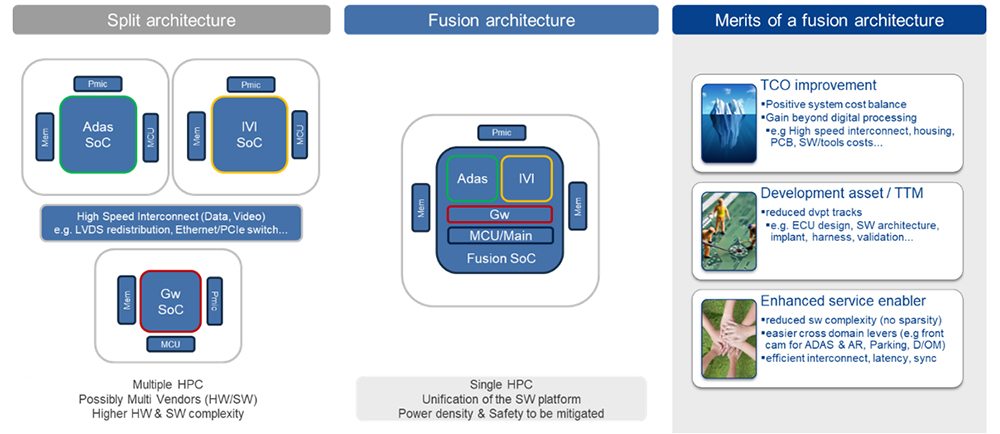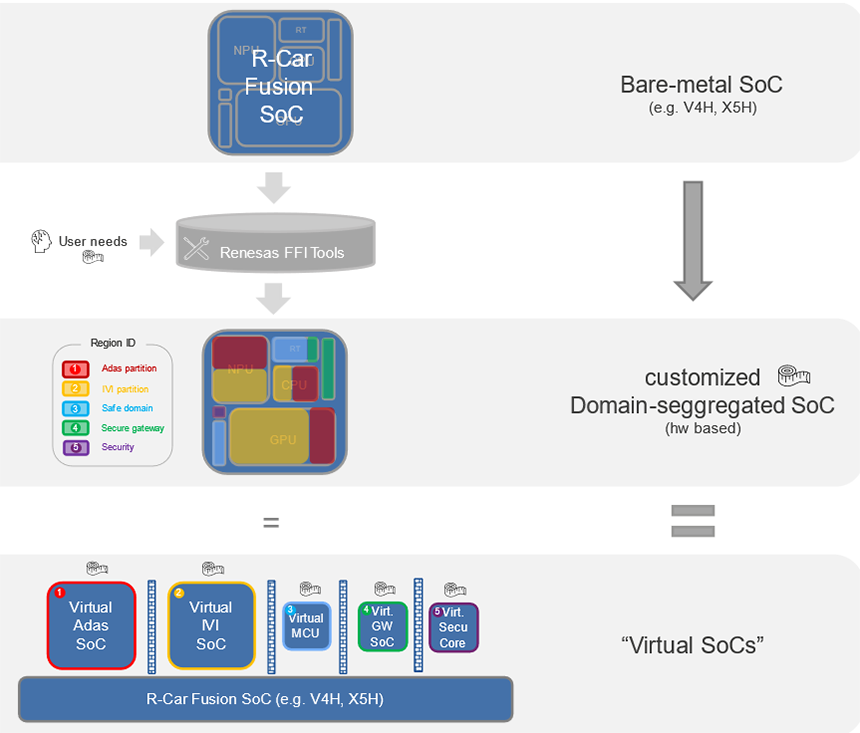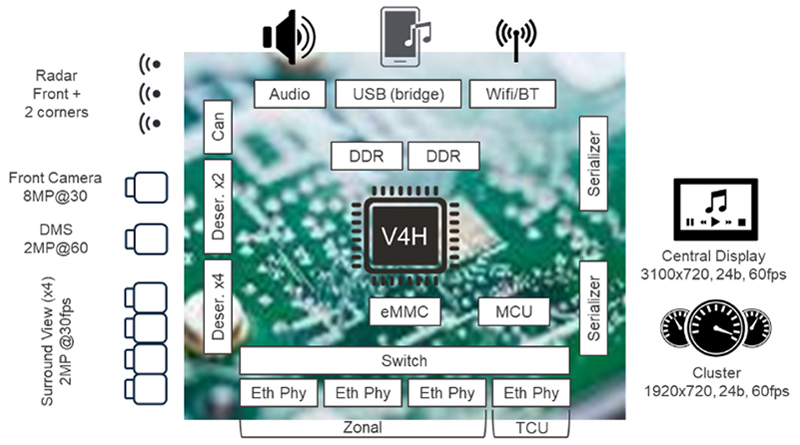The trend towards centralized architecture in the automotive industry is now a reality, allowing system costs to improve and laying down the foundation for software-defined vehicles (SDV), leading to the readiness for delivering a service-oriented car.
Current architectures remain distributed and there is room for improvement. Moving to the fusion architecture is the next step and this ultimate architecture can be achieved thanks to the technological progress of microelectronics and the extensive experience of long-standing automotive SoC suppliers like Renesas.
These advancements made it possible to cover all system needs in a single silicon device, offering significant cost improvements and making fusion SoCs a master key for cost-sensitive high-volume car production.

However, there are some key challenges to consider.
Challenges of the Fusion Architecture
One of the biggest challenges for fusion architecture is mixed-criticality, which integrates multiple domains in one place, mixing non-critical systems with critical ones. When mixed ASIL components coexist in a system, ISO 26262 mandates freedom from interference (FFI). While the distributed approach naturally provides physical isolation between different domains, ensuring that faults in non-critical systems won't affect critical ones, the fusion approach must rely on additional hardware and software mechanisms to provide the necessary isolation. The other big challenge of fusion is power density. While the fusion SoC gathers more features in one place, it faces a higher power density challenge compared to a distributed approach that spreads power across different ECUs and SoCs.
Also, reliability is a crucial issue for the fusion SoC due to the demanding mission profile and prolonged operational time.
Renesas Solution to Enable Fusion
Renesas' Virtual SoC concept offers a unique approach to handling mixed-criticality, surpassing traditional safety islands and hypervisors in both safety and flexibility.
It is mainly based on the RegionID concept allowing the SoC to partition into several domains customized to the user needs. It provides a foundation to enable spatial and temporal isolation and is used to extend the Quality of Service (QoS) mechanisms for traffic protection. This ensures critical tasks are thoroughly separated from non-critical domains.

Renesas also optimizes resources by delegating tasks to real-time cores through software components such as VirtIO interfaces, vision pipeline execution, networking, or safe display frameworks.
This delegation improves the system processing efficiency and makes possible the use of a light-hypervisor or even a hypervisor-less system for Gen5. This brings a double benefit in terms of cost-saving and performance.
Power Efficiency and Reliability are in Renesas' DNA
To guarantee reliability, Renesas tests its devices beyond AEC-Q100 standards. This stringent quality program is usually tailored to align with the customer's mission profile and is mutually agreed upon.
Regarding power efficiency, Renesas chooses the best-in-class technology node and power-efficient IPs (e.g., GPU, NPU, IMR…) to keep power consumption minimal.
V4H Fusion SoC for Entry-Level Cars
The combined processing resources (80kdmips, 150GFlops, 34tops) and peripherals in V4H enable regulatory ADAS, parking, and basic infotainment features to be hosted in one place while ensuring FFI between domains and maintaining low power consumption.
R-Car V4H is an ideal fusion SoC for entry-level cars, providing excellent cost savings compared to a distributed system, without compromising on safety.

Fusion SoCs allow users to drive on the road towards fusion architecture, which is the future of automotive electronics, optimizing both hardware and software, laying the foundation for SDVs, reducing costs, and accelerating time to market.
Renesas R-Car SoCs are at the forefront of the technology for fusion, offering innovative solutions like RegionID, QoS, ASIL D domain concept, and RT cores based frameworks. These features overcome the limitations of traditional approaches, enhancing system performance and offering best-in-class safety. With a strong emphasis on safety and reliability, along with continuous improvement (Kaizen) and strong experience in the automotive industry, Renesas stands out as the best partner for your next development based on the fusion architecture.
To learn more, visit the R-Car V4H product page.
